Toads are often compared with frogs. Differences include dry skin, crests behind the eyes, and the ability to produce poison.
Whenever attacked, toads are defended by the poison they produce. This poison is very toxic and can kill a range of small animals and cause major reactions whenever humans handle a toad.
Toads are often seen in camouflage colors that resemble the most common areas in their habitats.
There are found next to water areas in the US. The smallest toad species in North America measures just over 1 inch. The largest toad in North America measures more than 9.5 inches.
Table of Contents
What Are Toads?
Toads represent frogs with dry skin. Similar to frogs, toads have shorts legs and a poison-producing parotoid gland.
Toads aren’t classified differently from frogs from a scientific perspective. They are types of frogs in multiple families, mainly in the Bufonidae family.
Toad Identification
More than 500 species of true toads are known today. These are true toads that live terrestrial lives. While they live next to the water, they don’t depend as much on water sources as frogs.
What Do Toads Look Like?
Toads are known for having dry skin with bumps. This bumpy skin characterizes almost all toads but not frogs. Toads have a burning toxin that their body produces with glands behind the eyes.
Toads come in different colors and different sizes. Differentiating them from frogs should be based on their skin and their poisonous glands and not necessarily on their size.
It’s generally assumed that toads are larger than frogs. However, toads can be smaller than frogs. The Goliath frog measures 13.5 inches and it’s the largest frog, larger than toads.
Diet and Behavior
Toads are known to eat insects and flies. They also eat mammals and rodents such as mice. Toads can also eat spiders, snakes, and even frogs.
Toads have been reported as beneficial in keeping insect populations around the world under control. They are even used to control certain types of agricultural pests. Toads can eat a lot of species including beetle and invasive species.
Toads can also resort to cannibalism under certain circumstances. There are numerous reported cases of toads eating their species.
Habitat and Distribution
Toads are generally solitary creatures. They are less dependent on living in groups compared to frogs.
At the same time, toads are seen together in high numbers in the mating season.
Toads mature at the age of 3 when they start mating. Crocking sounds are made by male toads as by female toads during this period.
A female can lay up to 50.000 eggs after mating.
Toads live long lives. They have been shown to live up to 50 years in captivity, environments known for a lack of predators and food abundance.
Types of Toads – Identification Guide
The following species of toads are the most common in North America.
1. American Toad
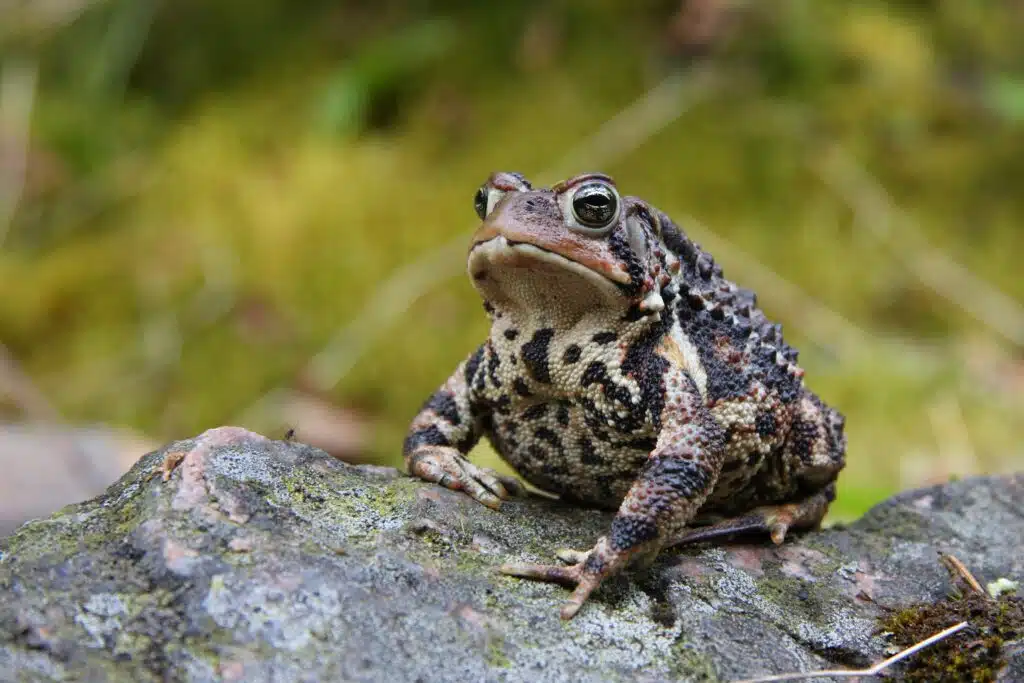
The American Toad (Anaxyrus americanus) is the most common toad species in North America. The species is seen in gray, brown, and even reddish colors.
American toads are known for giving off long sounds that last at least a few seconds. These are the loudest toads and they use communication during the mating process. Male toads give off these sounds to attract females.
The American toad is known to be a solitary creature. It lives in ponds, marshes, and ditches. This species only congregates during the mating process in the spring or summer.
Toads of these species are known carnivores. They eat snails, beetles, and worms. These frogs are also predated by snakes.
American toads are known to survive 1-2 years in the wild. Under a controlled habitat, the species can survive much longer.
American toads can live more than 30 years in captivity.
2. Gulf Coast Toad
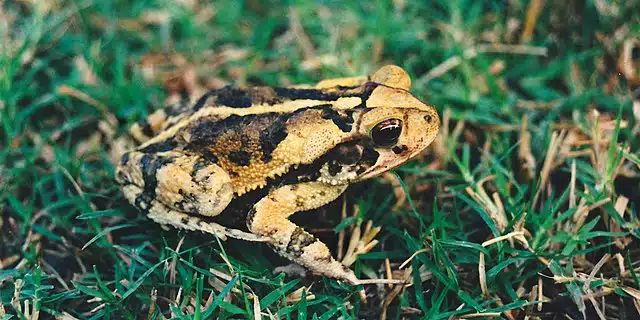
The Gulf Coast Toad (Incilius nebulifer) is a very common species in North America. It grows to a maximum size of 2 to 4 inches and it’s identified by its dark brown to black body.
This type of toad is known for living in a diverse habitat that includes wetlands, marshes, ditches, and urban environments.
Toads of the species are adapted to living next to human settlements.
One of the best times of the year to see these toads is during the mating season, primarily influenced by rainfall.
As soon as rain starts (from March to September), male toads make their way to water sources where they give off specific sounds to attract females.
Female Gulf Coast toads are known for laying up to 20.000 eggs at a time. Eggs hatch soon and their small toads look similar to adult toads of the species.
Offspring remain in ponds or other water sources until they can move out on their own.
3. Fowler’s Toad
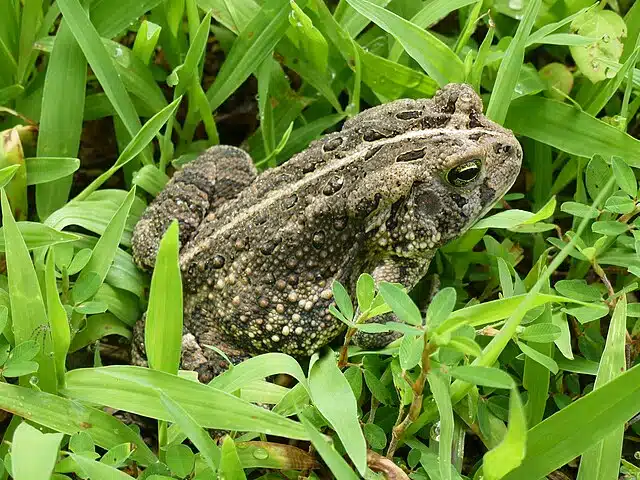
Fowler’s Toad (Anaxyrus fowleri) is a species that’s easily camouflaged. This type of toad has white, gray, and orange coloring which makes it hard to detect when on the ground on leaves in its natural habitat.
It lives in woodlands and meadows. Most Fowler’s toads live in the Eastern part of the US.
These toads eat insects and algae. Flower’s toads consume invertebrates except for earthworms that many other North American toads eat.
Fowler’s toads are also known for scraping algae off rocks, mainly by using their teeth.
4. Western Toad
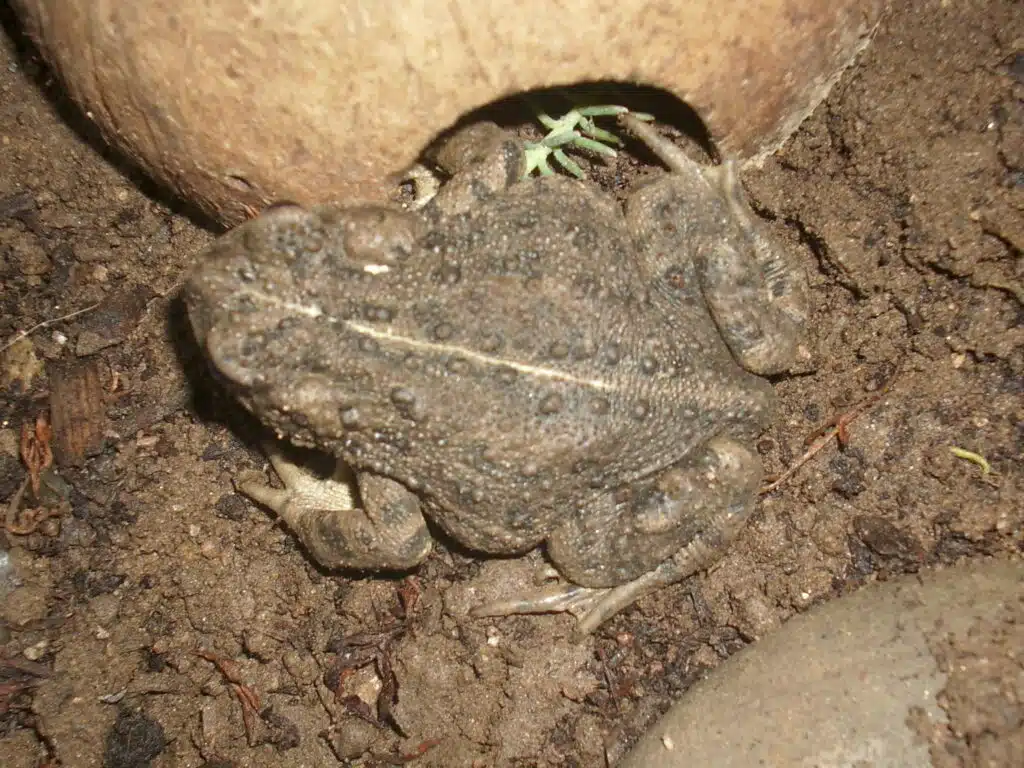
The Western Toad (Anaxyrus boreas) is one of the most widespread toad species in the US and Canada. It lives around the chain of the Rocky Mountains expanding its habitat up to Alaska.
This species is large, growing a few inches larger than the American toad. The Western toad has certain traits that depend on the altitude of its habitat.
For example, Western toads living at low altitude are nocturnal while the same species living at higher altitude is diurnal.
The nocturnal nature of this toad is believed to reduce the chance of predation together with the toxins it produces.
Western toads eat a wide range of insects including bees, beetles, and a series of high-altitude ants.
5. Southern Toad
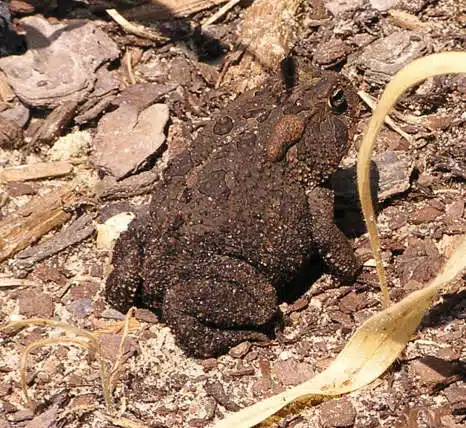
The Southern Toad (Anaxyrus terrestris) is a medium-sized species found in almost all Southern states (except for Tennessee).
It has distinct traits and colors depending on its habitat. Southern toads are inactive during the winter but they remain active in Florida throughout the year.
These toads are known to eat ants, beetle, cockroaches, and earwigs.
They also have a wide range of predators and competing species for the same prey. The American toad is known to eat small Southern toads.
Without predation, the Southern toad lives up to 10 years in the wild.
6. Woodhouse’s Toad
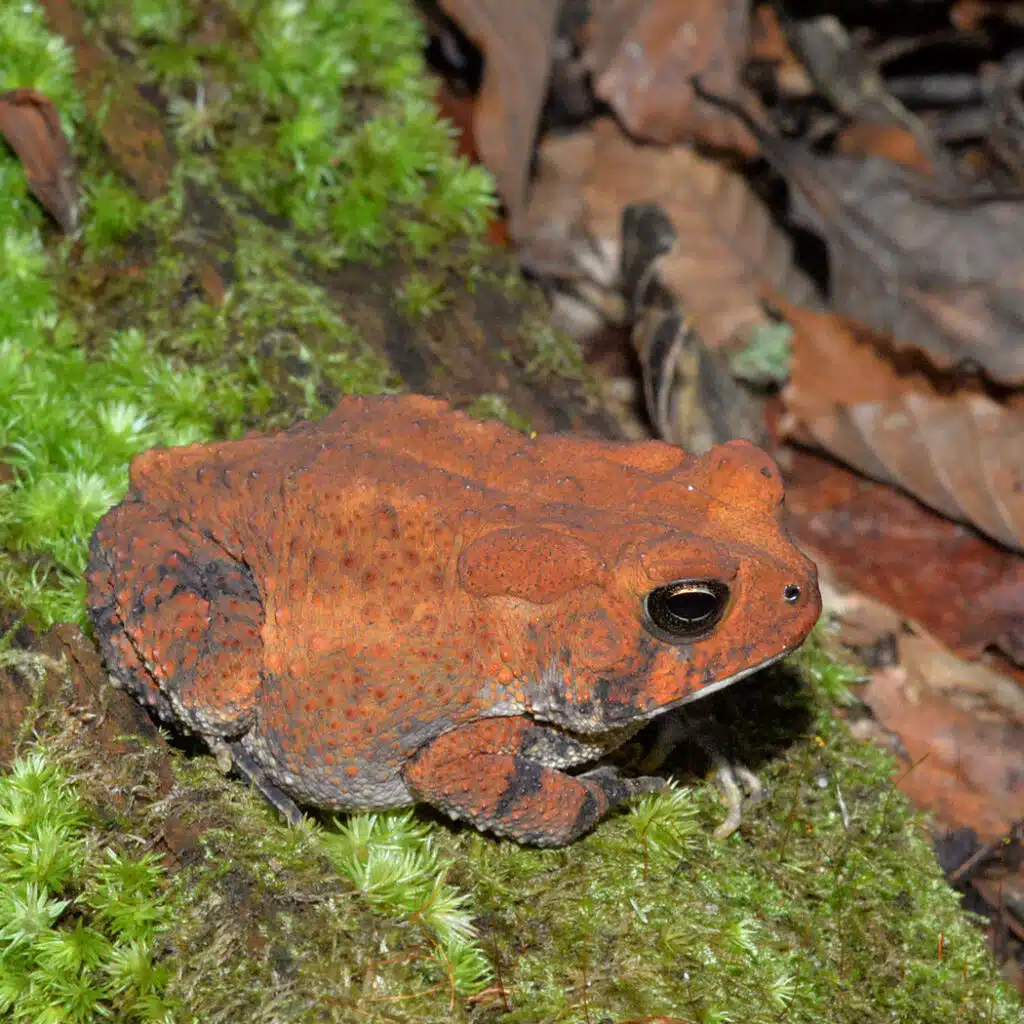
Woodhouse’s Toads (Anaxyrus woodhousii) are common in the US. These toads are comprised of 3 subspecies. The Rocky Mountain toad, the East Texas toad, and the Southwestern Woodland toad are all part of the same genus.
Toads of the species are mostly brown or rusty-brown. They live in woodlands but they’re also highly common in urban areas.
Toads of the species are often seen next to porches and homes, especially at night.
They come out from ditches attracted to flies, which in turn, are attracted to artificial light outside of the house.
Its wide population is well-adapted to living in North America and it can travel long distances whenever there’s a modification or reduction of its habitat.
7. Red-spotted Toad
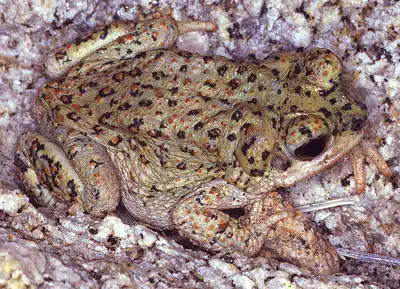
This toad species (Anaxyrus punctatus) is known for its adaptations to arid habitats and deserts.
In coastal regions, it lives close to the coast. In the desert, it can be found in many regions.
It remains hidden during the day under rocks to find moisture. In coastal areas, it can be found next to streams or rivers.
This makes the Red-spotted toad one of the most difficult species to see in real life as it tends to shy away from high moisture areas.
The best time to see this arid habitat-loving toad is when it rains. It comes out during the rain, it seeks puddles and ponds to lay eggs in.
Eggs hatch quickly in a matter of days. Then, tadpoles are ready to live lives similar to adults within a matter of weeks.
8. Cane Toad
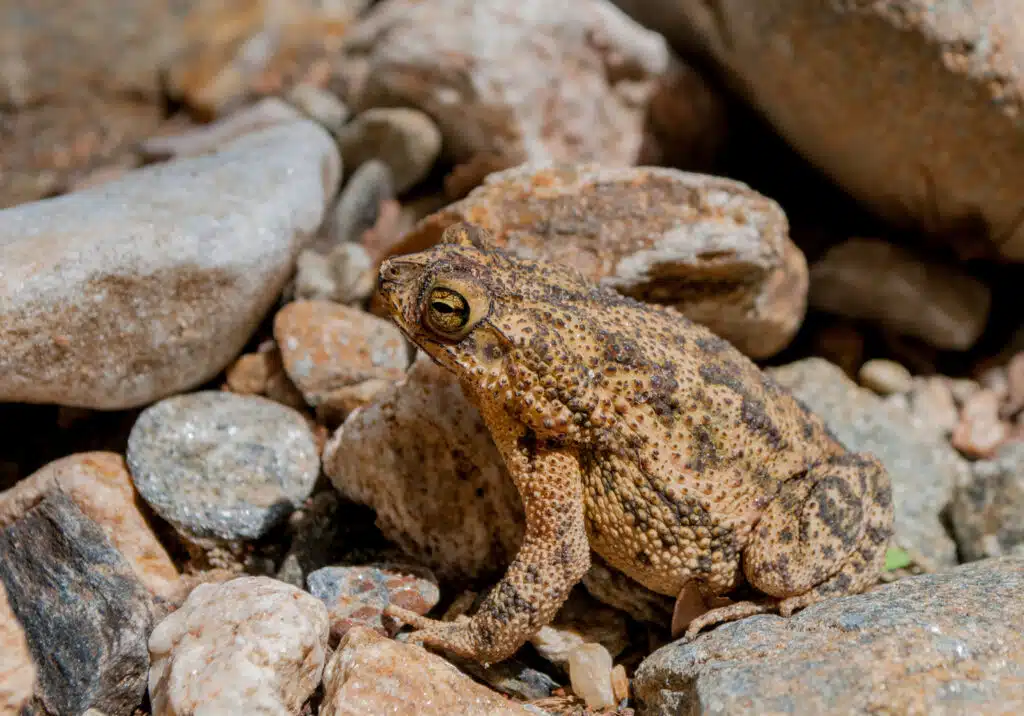
The Cane Toad (Rhinella marina) is one of the most common species in North America and the most common introduced toad species in the world.
These toads are easy to see as they stand upright when moving. They’re common across a wide range of habitats, including agricultural fields.
They feed on beetles, ants, earwigs, gastropods, crustaceans, and other bugs and insects.
The species is known for its dark body with white spots. Most importantly, it has been a species used against cane beetles.
This has been either successful or unsuccessful. These toads have adapted to introduced habitats outside North America.
But they’ve also become destructive. The case of Australia where the Cane toad started to eat local toads and frogs to the point of extinction is the most popular example of introducing Cane toads in other habitats.
Today, many areas of the world where these toads have been introduced have adopted the pest status for the species as a result.
9. Texas Toad
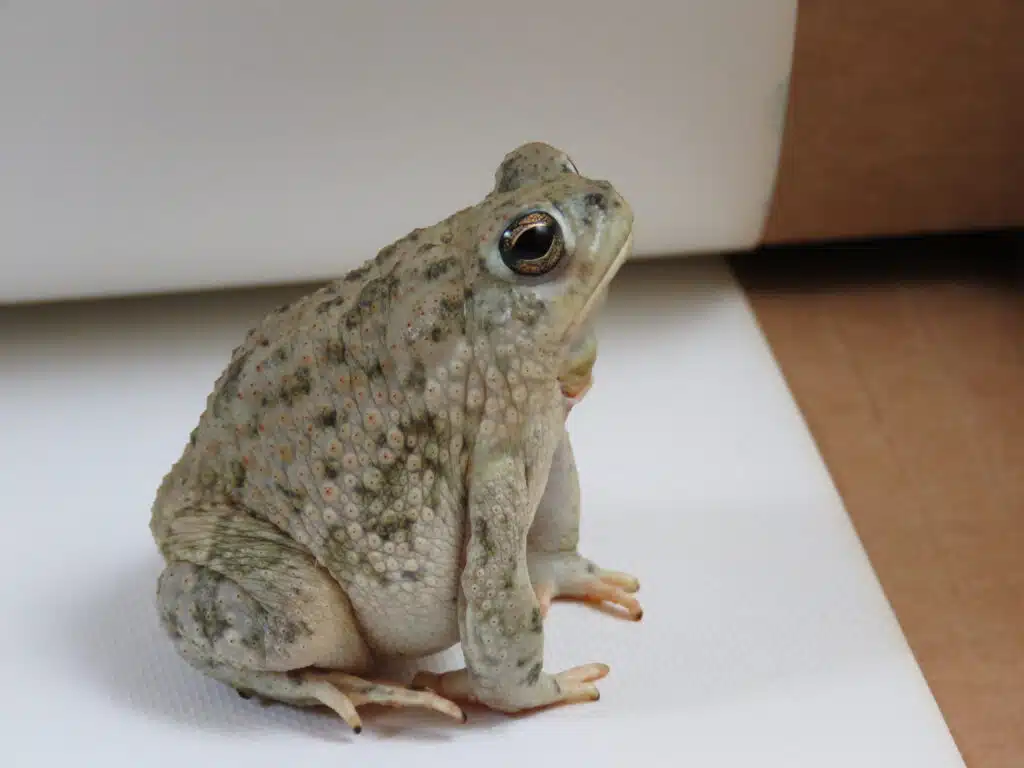
Texas Toads (Anaxyrus speciosus) live in Texas and parts of Northern Mexico. These toads prefer warm environments.
Unlike other species that live in warm habitats, Texas toads begin the mating season in April. This season starts a month later and it ends a month sooner, in September.
The mating process of the Texas toad has been studied for its variables as well.
A single female can lay eggs that are fertilized by multiple males.
Females of the Texas toad species have also shown male selection behavior. Female toads only choose the largest males to mate with. They can also refuse to mate with smaller males should they initiate the process.
10. Great Plains Toad
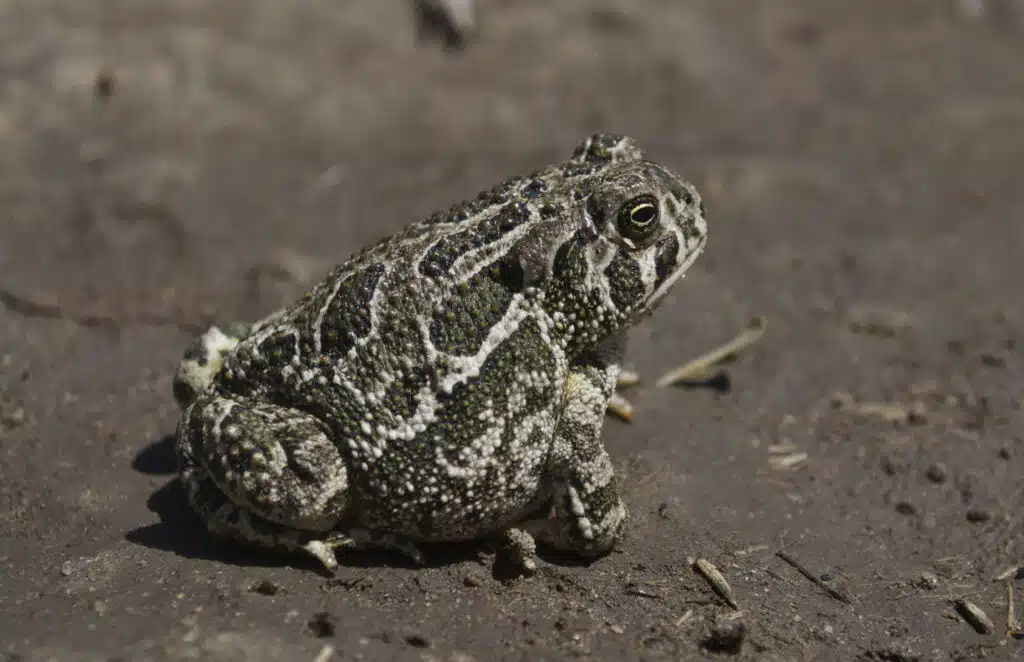
The Great Plains Toad (Anaxyrus cognatus) is known for its gray, brown, or green color. These toads are further identified by dark gray or dark green markings.
These toads are also known for eating a wide range of cutworms. These are specialized worms that are found under leaves and vegetation.
Size-wise, the Great Plains toads are similar to other species. They grow to an adult size between 2 and 4.5 inches.
The species is considered nocturnal or nocturnal and diurnal in habitats with a body of still water.
Toads of the species also live in agricultural fields. It’s here that it has a wide range of insects to choose from.
However, toads living in this habitat are also preyed on by Garter snakes. This is why they remain hidden in burrows when not active.
11. Oak Toad
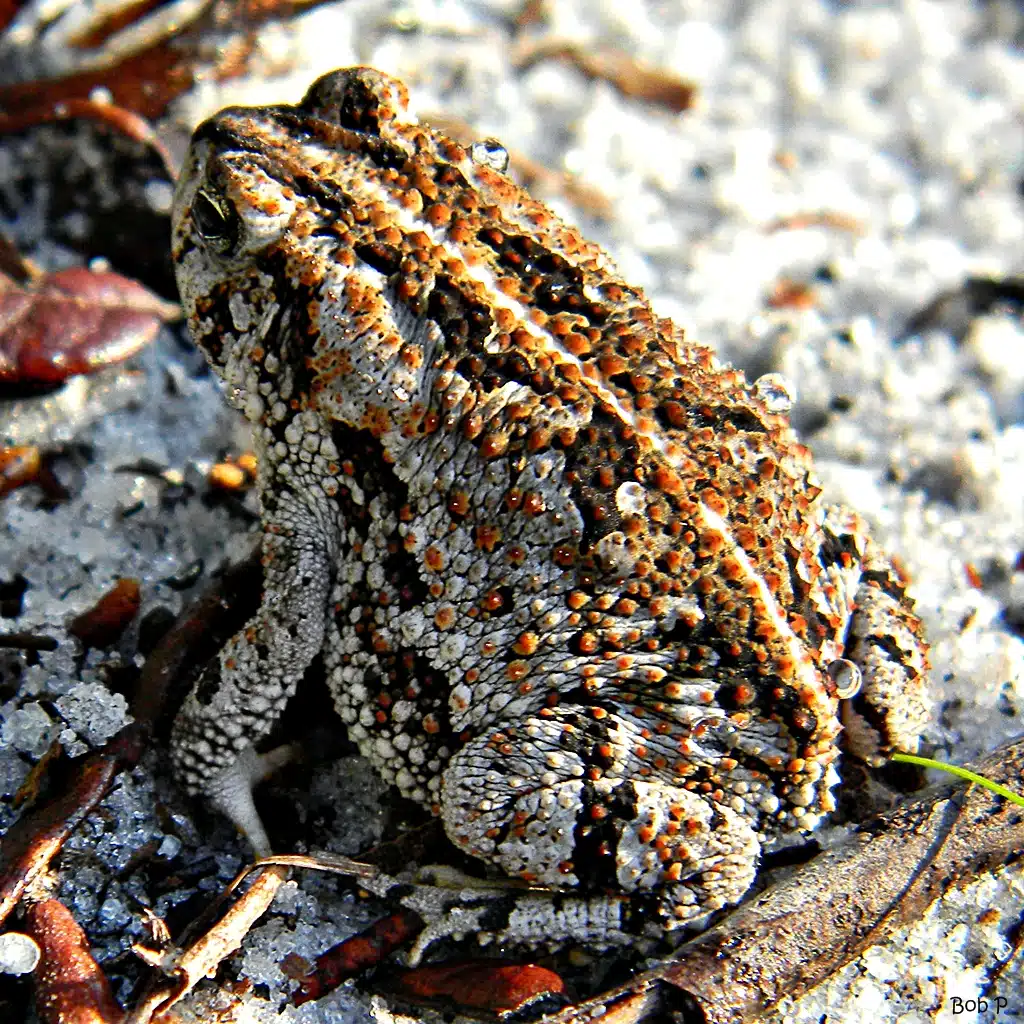
Oak Toads (Anaxyrus quercicus) are one of the smallest species of toads in the US. They often don’t grow larger than 0.75 inches. The largest Oak toads only grow up to 1 inch.
These toads are common in Florida and nearby states. It lives in pine and oak forests where it feeds on very small prey such as ants.
Regardless of their size, these toads are still poisonous. They have large poison-generating glands compared to the rest of their body.
The Oak toad is also one of the preferred foods for a series of snakes. Hognose snakes are known for specifically looking for toads.
These small toads release toxins to defend themselves. They also lay eggs with toxins on them to keep them safe from predation.
12. Colorado River Toad
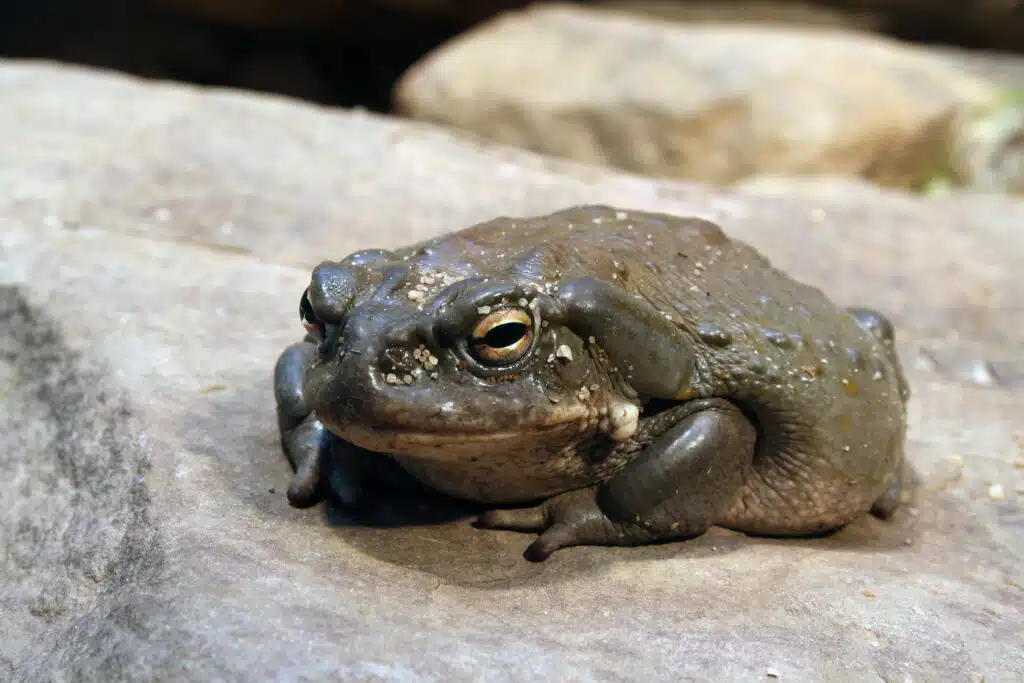
The Colorado River Toad (Incilius alvarius) is one of the largest toads in the US. It grows to a size of over 7 inches which makes it a large amphibian compared to large frogs as well.
Unlike many other native species, the Colorado River toad is also a bit more aquatic. It never moves too far away from water sources even if it likes arid climates.
Males are seen together around still water such as puddles in the summer. They call out females for mating.
The Colorado River toad is also a capable species when it comes to defending itself, especially through toxins.
The toxins of the species are known to cause paralysis in many species. These toads have even killed dogs with their potent poison.
13. Green Toad
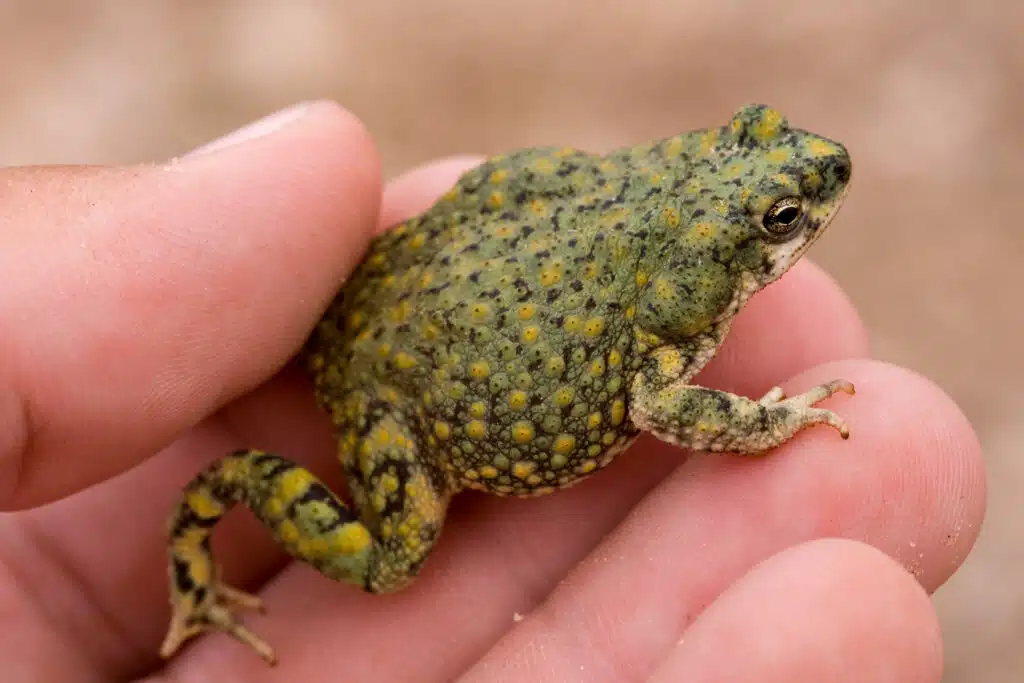
The Green Toad (Anaxyrus debilis) is a common species in many Southern parts of the US. It prefers semi-arid climates where it lives next to temporary streams and water accumulations.
The species is known for its light green body with dark green marks.
While very common, toads of this genus aren’t easily seen as they live further out from urban areas.
The mating season of the Green toads is the sole period of the year these toads are seen together.
Males gather at the beginning of July, mostly around a puddle or an area of stagnant water where they can mate and where females can lay their eggs in.
14. Arizona Toad
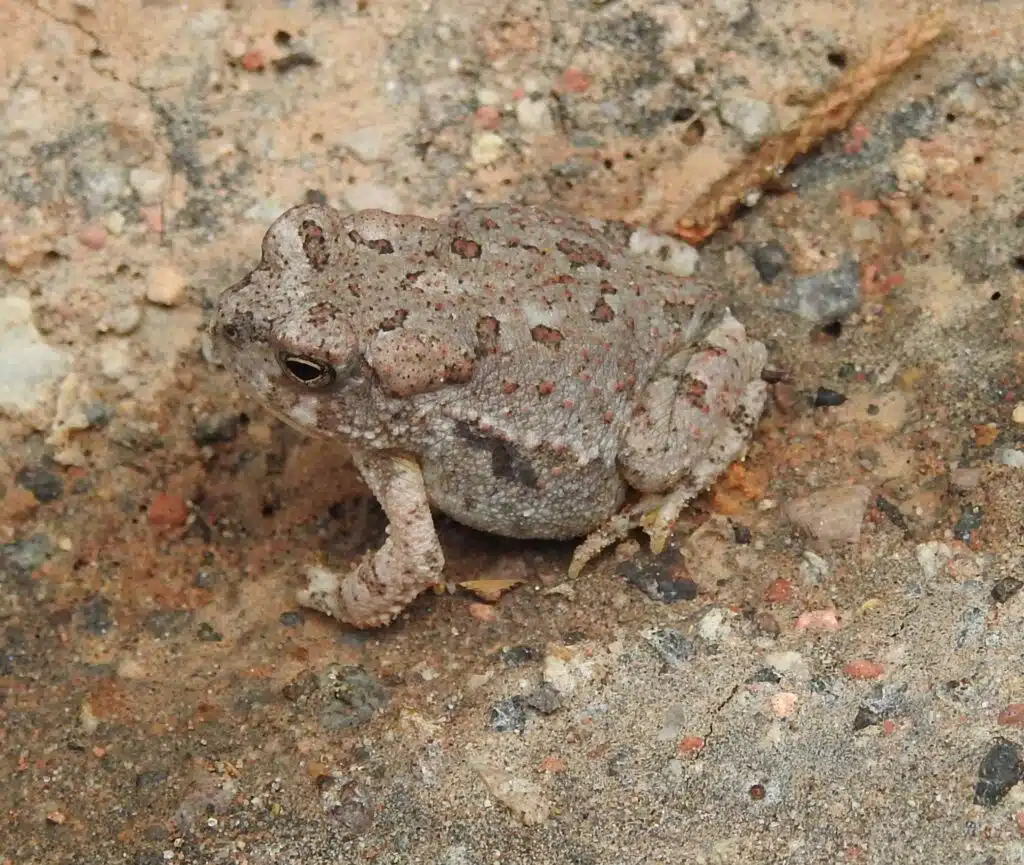
The Arizona Toad (Anaxyrus microscaphus) is one of the multiple US species with variable coloring. It can be tan, gray, or dark brown with dark spots. The species is small to medium in size growing to a maximum size between 2 and 3 inches.
Arizona toads are among the most resilient species in the country with a presence at high altitudes. It can be found even above 6.000 feet.
These toads haven’t been extensively studied. What is known is that they retreat from fall to early spring in February.
The secretive nature of the species is also attributed to its nocturnal activity. It’s believed adults eat insects while the young developing toads feed on algae.
15. Yosemite Toad
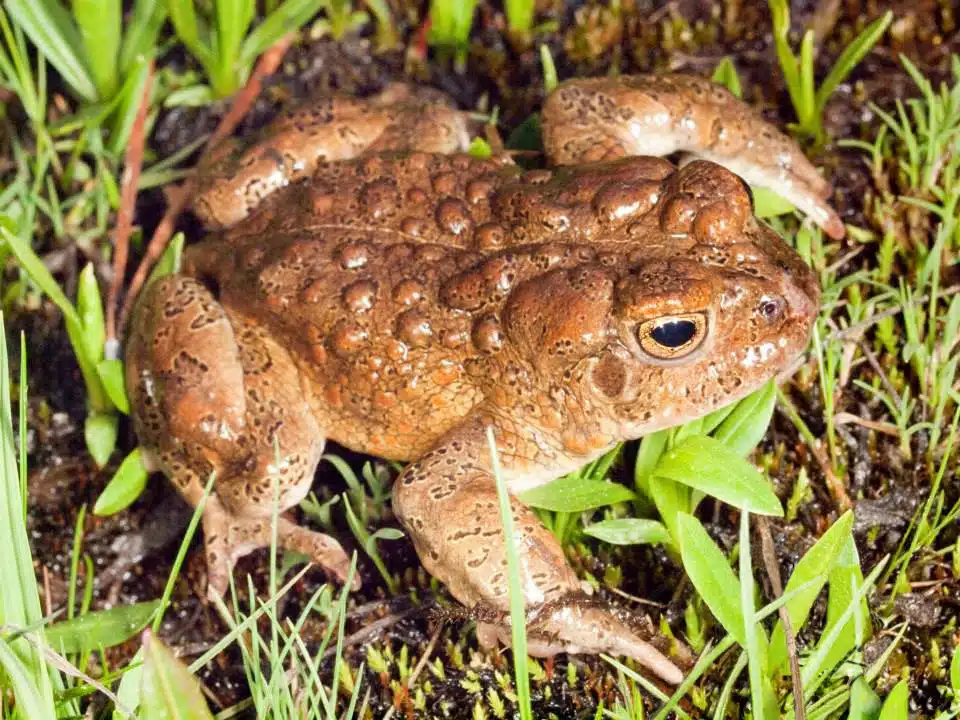
The Yosemite Toad (Anaxyrus canorus) is one of the related species of the Western toad. The main difference is that the Yosemite toad has multiple adaptations that allow it to live at a very high altitude.
This species is known for its alpine adaptations. It lives next to ephemeral lakes and ponds. It lays eggs in the same coming and going ponds, even in water accumulation from melting snow.
Beetles and weevils are among the preferred insects these toads feed on.
The feeding season is short for the species given their low-temperature habitat. Toads of the species enter rodent burrows for the coldest months of the year.
16. Arroyo Toad
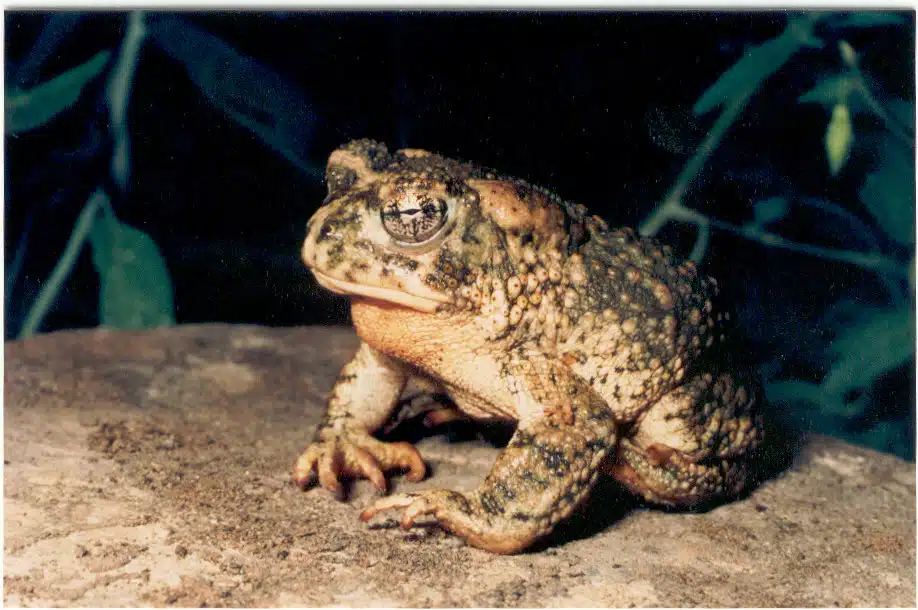
This species (Anaxyrus californicus) is common in Southwestern US habitats. It grows to a size between 2 and 3 inches and it’s known to be elusive as a nocturnal toad.
The Arroyo toad is also known for releasing a toxin from its parotoid glands.
Toads of the species tend to hide away in vegetation whenever seeing predators or humans.
However, their effect on humans can be deadly when handled.
In most cases, the toad does not cause death. But it can kill people when it releases a large number of toxins. It can also paralyze people with its toxins.
Mild reactions in humans include irritation, runny eyes, and respiratory problems.
17. Canadian Toad
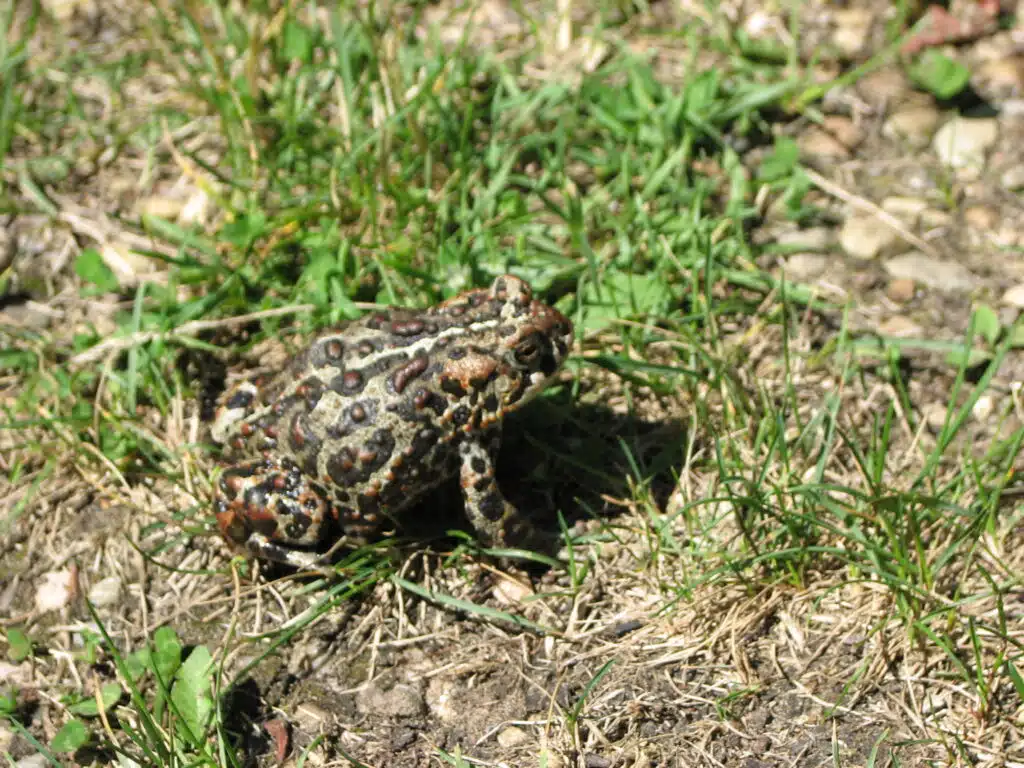
The Canadian Toad (Anaxyrus hemiophrys) is recognized by its thick cranial crest that inspires its name. This species is found in Canada and parts of the Midwest.
The species is known to have a similar diet to other toads in the Midwest. It eats beetles, ants, spiders, and even wasps.
The species is known to enter a state similar to hibernation early in the year. Toads of the species burrow Mima mounds, earth structures that keep them warm during the fall and winter months.
Up to a few hundred toads are found in Mima mounds at a time. They tend to stay closer to the surface in the fall and dig deeper underground in the winter.
This is one of the species that spends almost half of a year underground escaping cold weather.
18. Black Toad
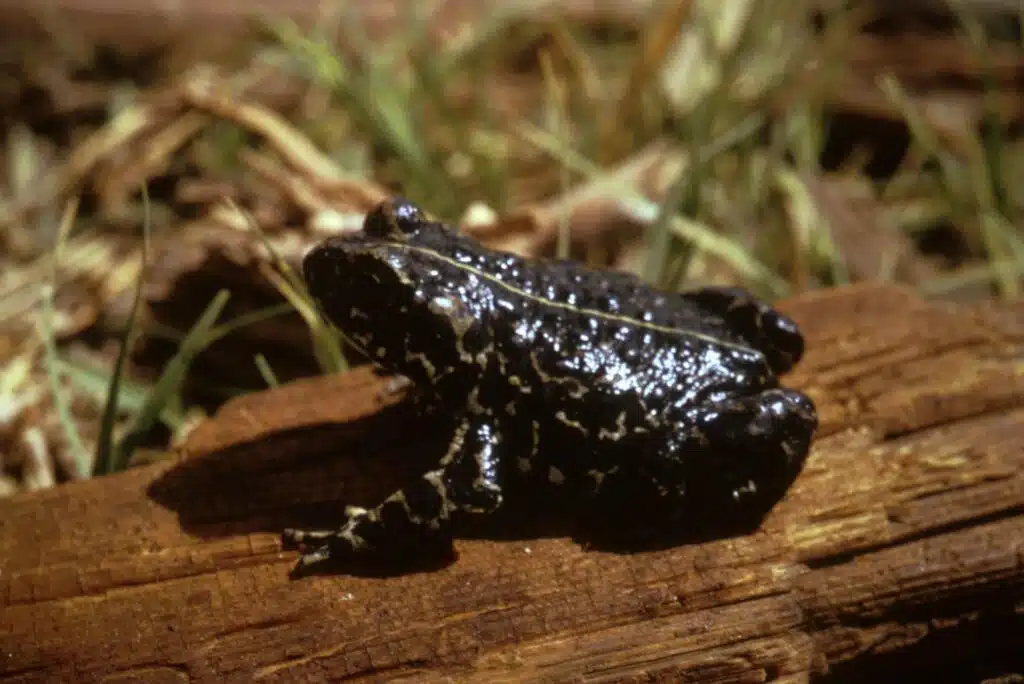
The Black Toad (Anaxyrus excel) gets its name from its mostly black body. They grow to a size of around 2 inches as adults.
The species has a very specific habitat in its lives. Only found in California, the Black toad lives in microhabitats around Deep Springs Valley and areas of Inyo County.
Its population numbers are high in these areas. However, it’s considered a species under observation due to these habitat limitations as the toad hasn’t been reported anywhere else in the US.
Those venturing to the outback can often see it along streams but it has a high presence around irrigation ditches where it shares its habitat with other California toads.
19. Houston Toad
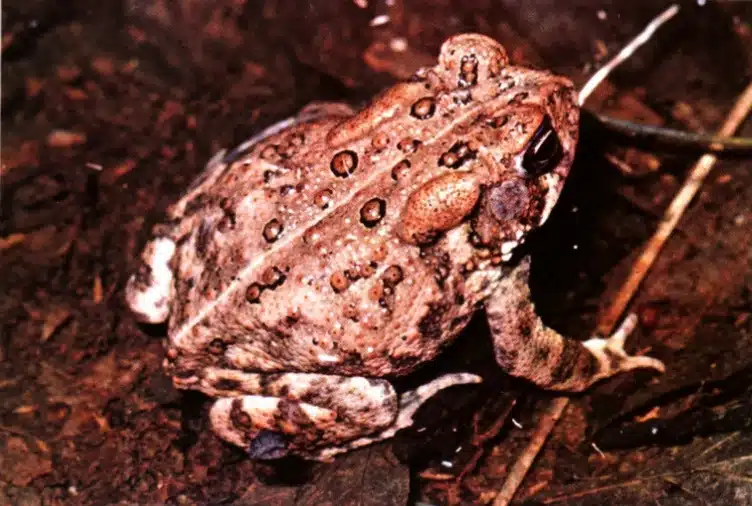
The Houston Toad (Anaxyrus houstonensis) is seen frequently around hardwood woodlands. It’s known for hopping for movement and not for walking as the Black toad.
Houston toads only live 2-3 years. It’s believed their short lives (compared to other toads) are a result of their slow hopping movements.
Predators such as snakes and raccoons move considerably faster than the Houston toad.
Found in 12 counties around Texas, the toad prefers still water or slowly moving water for its habitat. It feeds on insects attracted to these bodies of water such as moths and beetles.
20. Sonoran Green Toad
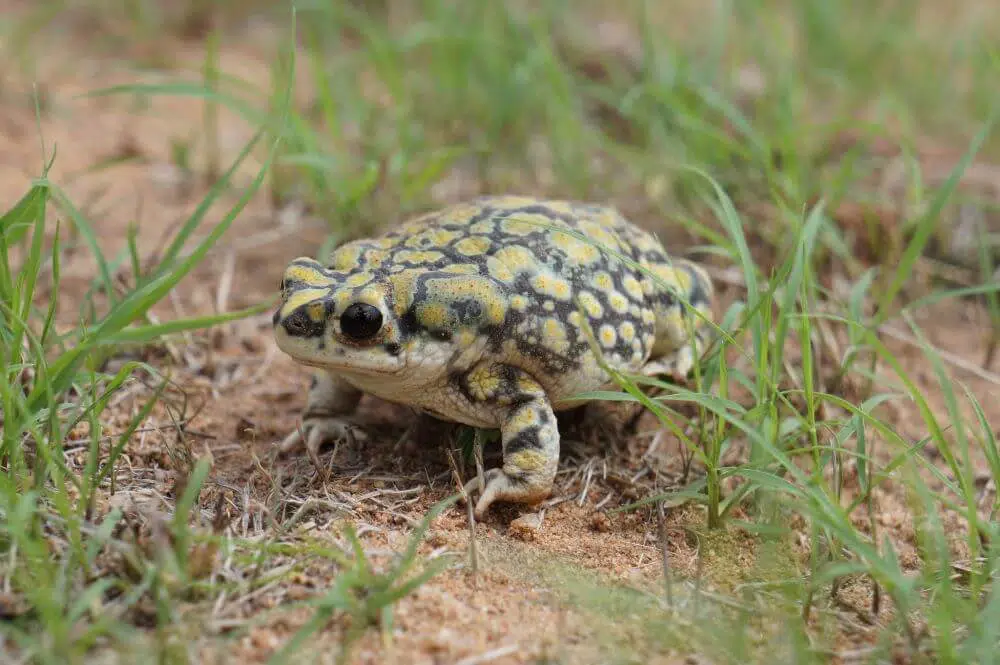
The Sonoran Green Toad (Anaxyrus retiformis) is one of the most secretive toad species in the United States. This species is found around the Pima and Pinal regions of Arizona.
It cannot be seen by people most times of the year as it lives underground, only making its way out for mating and feeding.
The Sonoran Green toad lives more than 10 months of the year underground. This makes it an elusive species little is known about.
One of the only times these toads can be seen is during the mating period which prompts males to call for females. Male toads have been known for giving off an alarm-like sound that attracts females during this period of the year.
21. Amargosa Toad
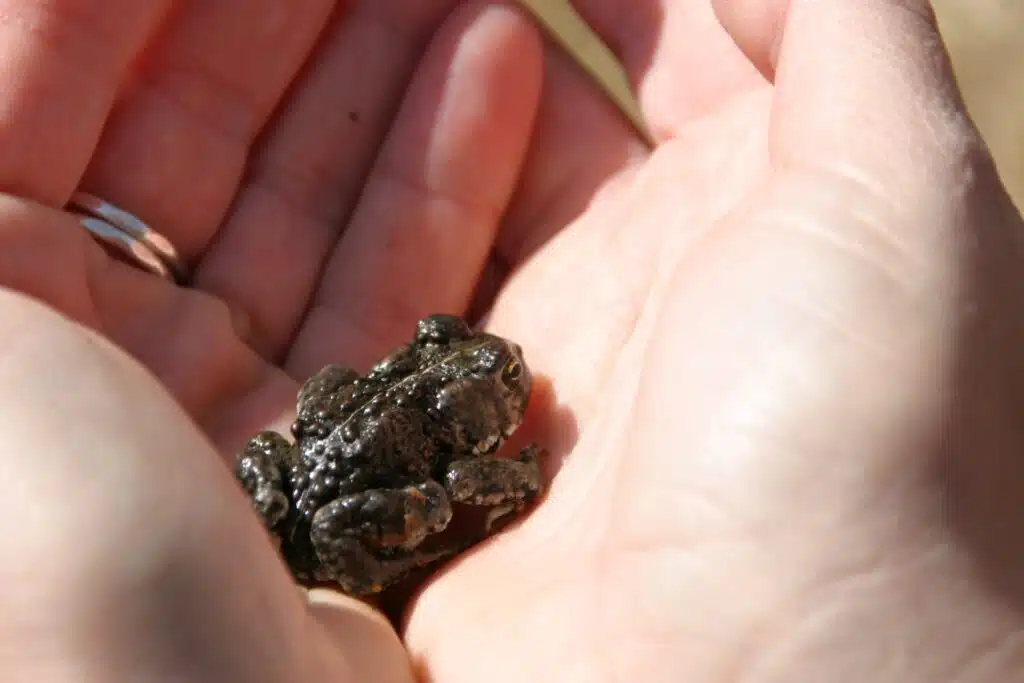
The Amargosa Toad (Anaxyrus nelsoni) is known for its speckled body with black marks. It grows to a maximum size of 4 inches and it’s mostly found in an olive-green color.
This species has one of the most restricted habitats as it’s only seen around a few miles of land in the Amargosa Desert.
Often seen around cottonwoods, the species is still common in the Amargosa Desert due to local interventions which prevent habitat loss.
Isolated springs along the Amargosa Desert are the best places to find this species.